Showing Spotlights 17 - 24 of 80 in category All (newest first):
 Ocean wave energy is an abundant resource of clean energy. However, having been explored for decades, there is still lacking efficient and economical technologies to convert water wave energy into electricity for large-scale applications Researchers have developed a new type of wave energy harvester, hierarchically structured triboelectric nanogenerator (HS-TENG), based on the triboelectric effect, targeting to harvest the huge blue energy for large-scale deployments.
Ocean wave energy is an abundant resource of clean energy. However, having been explored for decades, there is still lacking efficient and economical technologies to convert water wave energy into electricity for large-scale applications Researchers have developed a new type of wave energy harvester, hierarchically structured triboelectric nanogenerator (HS-TENG), based on the triboelectric effect, targeting to harvest the huge blue energy for large-scale deployments.
Oct 7th, 2019
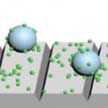 Researchers report a fluid-driven nanoparticle transportation clean-and-repair approach that reveals a novel self-healing system that conserves matter, behaves autonomously, and is implemented easily. Debris resting on a substrate is relocated, in one step, from undamaged to damaged regions of the substrate, using functional droplets that recognize and transport the nanoparticles. This simultaneous clean-and-repair approach reveals a novel self-healing system that conserves matter, behaves autonomously, and is implemented easily.
Researchers report a fluid-driven nanoparticle transportation clean-and-repair approach that reveals a novel self-healing system that conserves matter, behaves autonomously, and is implemented easily. Debris resting on a substrate is relocated, in one step, from undamaged to damaged regions of the substrate, using functional droplets that recognize and transport the nanoparticles. This simultaneous clean-and-repair approach reveals a novel self-healing system that conserves matter, behaves autonomously, and is implemented easily.
Feb 19th, 2019
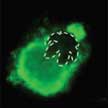 Research on micro- and nanomachines has advanced from the observation and understanding of basic motion behavior to the constantly improving capabilities of performing complex tasks. This ranges from interaction with bacteria to propulsion based on cells and in vivo medical applications. A review looks at the applications of micro- and nanomachines in living biosystems from two aspects: the interaction of micro/nanomachines with other microscopic organisms or biological units, and the efforts toward application of micro/nanomachines in human body.
Research on micro- and nanomachines has advanced from the observation and understanding of basic motion behavior to the constantly improving capabilities of performing complex tasks. This ranges from interaction with bacteria to propulsion based on cells and in vivo medical applications. A review looks at the applications of micro- and nanomachines in living biosystems from two aspects: the interaction of micro/nanomachines with other microscopic organisms or biological units, and the efforts toward application of micro/nanomachines in human body.
Jul 5th, 2018
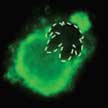 From interaction with bacteria, propulsion based on cells, in vivo medical applications to even intracellular applications, the rapidly expanding development of micro- and nanomachines with sizes comparable to or even smaller than mammalian cells, has led this field to advance from understanding of basic motion mechanisms to applications in living biosystems. A recent review highlights the recent efforts for and toward application of micro/nanomachines in living biosystems, including microorganisms, biological cells, and human body. Applications of micro- and nanomachines in living biosystems are reviewed from two aspects: their interaction with other microscopic organisms or biological units, and the efforts toward their application in the human body.
From interaction with bacteria, propulsion based on cells, in vivo medical applications to even intracellular applications, the rapidly expanding development of micro- and nanomachines with sizes comparable to or even smaller than mammalian cells, has led this field to advance from understanding of basic motion mechanisms to applications in living biosystems. A recent review highlights the recent efforts for and toward application of micro/nanomachines in living biosystems, including microorganisms, biological cells, and human body. Applications of micro- and nanomachines in living biosystems are reviewed from two aspects: their interaction with other microscopic organisms or biological units, and the efforts toward their application in the human body.
Jan 30th, 2018
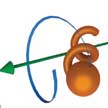 Researchers find magnetic helical nanomachines that mimic the swimming characteristics of E. coli bacteria to be particularly promising because of their extremely small size and their capability of navigating in various biological fluids like human blood. New work extends the possibility of using helical nanomachines as a tool to measure the localized mechanical properties of a heterogeneous environment that is ubiquitous in biological systems. This technique can be useful to gain valuable insights into the physiological changes of a cell in response to a disease or a drug, leading to better therapeutics.
Researchers find magnetic helical nanomachines that mimic the swimming characteristics of E. coli bacteria to be particularly promising because of their extremely small size and their capability of navigating in various biological fluids like human blood. New work extends the possibility of using helical nanomachines as a tool to measure the localized mechanical properties of a heterogeneous environment that is ubiquitous in biological systems. This technique can be useful to gain valuable insights into the physiological changes of a cell in response to a disease or a drug, leading to better therapeutics.
Jan 26th, 2018
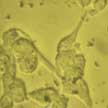 The role of artificial nanomotors integrated with therapeutic capabilities is a very promising field for clinical applications of medical nanotechnology. Researchers now have demonstrated the intelligent design of nanomotors with a single coating of ferrite, which act as a spacer layer as well as providing therapeutic potential by magnetic hyperthermia. These motors can be remotely maneuvered. The team also tackled the problem of magnetic agglomeration associated with ferromagnetic nanomotors, which limits their biomedical application.
The role of artificial nanomotors integrated with therapeutic capabilities is a very promising field for clinical applications of medical nanotechnology. Researchers now have demonstrated the intelligent design of nanomotors with a single coating of ferrite, which act as a spacer layer as well as providing therapeutic potential by magnetic hyperthermia. These motors can be remotely maneuvered. The team also tackled the problem of magnetic agglomeration associated with ferromagnetic nanomotors, which limits their biomedical application.
Jan 5th, 2018
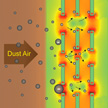 Researchers have utilized a rotating triboelectric nanogenerator (R-TENG) to enhance a polyimide nanofiber air filter for particulate matter (PM) removal. The nanofiber filter exhibits high removal efficiency for the PM particles with diameter larger than 0.5 microns. When working with the R-TENG, the removal efficiency of the filter is enhanced, especially in the region with the diameter of the particles in the PM smaller than 100 nm. This work may propose an approach of air cleaning and haze management by introducing TENGs to the filters.
Researchers have utilized a rotating triboelectric nanogenerator (R-TENG) to enhance a polyimide nanofiber air filter for particulate matter (PM) removal. The nanofiber filter exhibits high removal efficiency for the PM particles with diameter larger than 0.5 microns. When working with the R-TENG, the removal efficiency of the filter is enhanced, especially in the region with the diameter of the particles in the PM smaller than 100 nm. This work may propose an approach of air cleaning and haze management by introducing TENGs to the filters.
May 26th, 2017
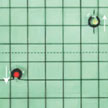 A recent review article highlights the role of electrochemistry in synthesizing materials for self-powered micro- and nanodevices; the aspect of charge transfer and changes in electrochemical potentials for locomotion; control of self-propelled motion using electrochemistry and electric fields; and possible applications in electrochemical sensing and energy generation using micro- and nanoscale motion. The authors discuss various electrochemical techniques, which allow for the fabrication of large amounts of micro/nanorobots from diverse materials, with and without the use of templates.
A recent review article highlights the role of electrochemistry in synthesizing materials for self-powered micro- and nanodevices; the aspect of charge transfer and changes in electrochemical potentials for locomotion; control of self-propelled motion using electrochemistry and electric fields; and possible applications in electrochemical sensing and energy generation using micro- and nanoscale motion. The authors discuss various electrochemical techniques, which allow for the fabrication of large amounts of micro/nanorobots from diverse materials, with and without the use of templates.
May 16th, 2017
 Ocean wave energy is an abundant resource of clean energy. However, having been explored for decades, there is still lacking efficient and economical technologies to convert water wave energy into electricity for large-scale applications Researchers have developed a new type of wave energy harvester, hierarchically structured triboelectric nanogenerator (HS-TENG), based on the triboelectric effect, targeting to harvest the huge blue energy for large-scale deployments.
Ocean wave energy is an abundant resource of clean energy. However, having been explored for decades, there is still lacking efficient and economical technologies to convert water wave energy into electricity for large-scale applications Researchers have developed a new type of wave energy harvester, hierarchically structured triboelectric nanogenerator (HS-TENG), based on the triboelectric effect, targeting to harvest the huge blue energy for large-scale deployments. 
 Subscribe to our Nanotechnology Spotlight feed
Subscribe to our Nanotechnology Spotlight feed





